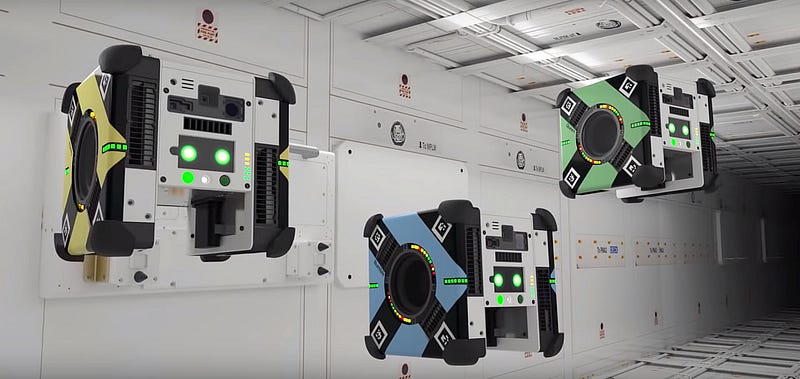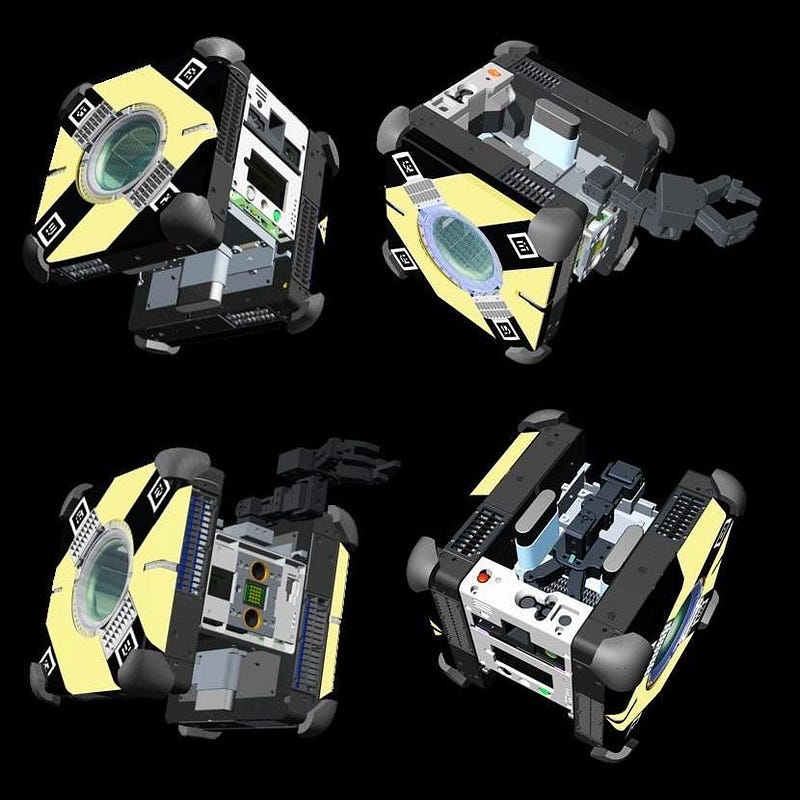Bees in Space: The Role of Astrobees on the ISS
Written on
Chapter 1: Introduction to Astrobees
The International Space Station (ISS) is set to host a fleet of robotic bees, known as Astrobees, which will aid astronauts with various routine tasks aboard the orbiting laboratory. Mirroring their earthly counterparts, these mechanical bees will diligently document experiments conducted by the station's crew, manage supplies, and keep inventory organized. After completing their assignments, the Astrobees will return to their docking stations located in the Kibo module to recharge their batteries.
On April 19, two of these Astrobees successfully docked with the ISS, arriving aboard the S.S. Roger Chaffee spacecraft. The trio of robotic bees, affectionately named Honey, Queen, and Bumble, have begun their mission, with Honey and Bumble currently operational and Queen expected to join them in July. Researchers plan to initiate testing on these bees six weeks post-arrival. Each cubed Astrobee measures 30 centimeters (approximately one foot) on each side and can function either autonomously or via remote control from Earth.
This paragraph will result in an indented block of text, typically used for quoting other text.
Section 1.1: The Purpose of Astrobees
Astrobees are designed not just for simple tasks but also to advance the potential for future exploration missions. According to NASA, these robotic assistants will play a crucial role in testing how robots can support crew members and handle maintenance duties aboard spacecraft. This innovation aims to boost astronaut productivity and facilitate the upkeep of ships when crew members are absent, particularly in deep-space locales like the Moon or Mars.

Chapter 2: Arrival and Significance of the Astrobees
The Astrobees made their entrance to the ISS with the Northrop Grumman Cygnus spacecraft on April 17, launched via a Cygnus Antares rocket. The launch took place at the Mid-Atlantic Regional Spaceport in Virginia, delivering 3,450 kilograms (7,600 pounds) of cargo to the Unity Module of the ISS, while the station orbited 410 kilometers (255 miles) above the Indian Ocean.
In a related video, titled "Space Bureaucracy Simulator - Space Station 13 Day 2," viewers can explore the complex dynamics of operating a space station.
The current mission marks the 11th successful dock of a Northrop Grumman spacecraft with the ISS. The S.S. Roger Chaffee is named in honor of the astronaut who lost his life in the Apollo One fire in 1967, alongside his colleagues, Virgil "Gus" Grissom and Ed White. Frank DeMauro, vice president of space systems at Northrop Grumman, expressed the sentiment behind this mission, emphasizing a commitment to advancing human space exploration.

Section 2.1: Capabilities of the Astrobees
Each Astrobee is outfitted with three payload bays, enabling astronauts to install new hardware modules as needed. Software updates can be performed while the bees are docked, allowing them to adapt to new tasks that may arise. The robots are equipped with robotic arms, allowing them to retrieve items for researchers aboard the ISS. They navigate the station using electric fans and are guided by six cameras, producing a gentle hum reminiscent of buzzing bees.
According to the whimsical take in the film Bee Movie, "According to all known laws of aviation, there is no way a bee should be able to fly..." but these Astrobees are here to prove that anything is possible.
In another video titled "Space Station 13: Only Spooky Space Station RP Allowed," viewers can engage with the humorous side of space station management.
Section 2.2: Future Prospects
Maria Bualat, the project manager for Astrobee at NASA's Ames Research Center, noted that these robotic bees will validate capabilities that could significantly enhance human exploration. Conducting experiments in microgravity will lead to the development of innovative hardware and software for upcoming space missions.

The Cygnus spacecraft will remain docked at the ISS until July 23 before embarking on a mission to deploy two small CubeSats for private companies, concluding with a controlled re-entry over the Pacific Ocean. While we can only speculate what might happen if one of the Astrobees seeks a career change, it’s likely that a comedic tale akin to a Jerry Seinfeld film could unfold.